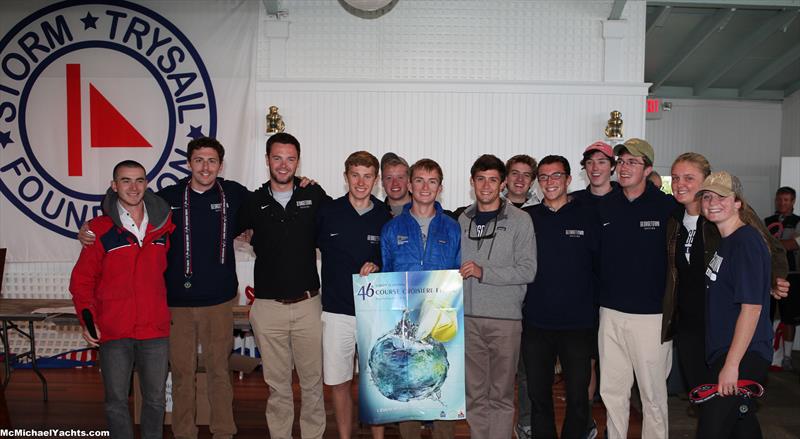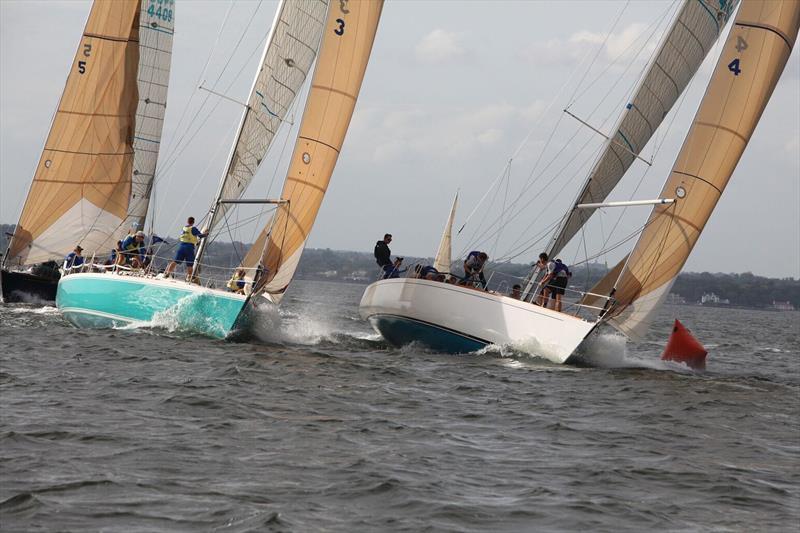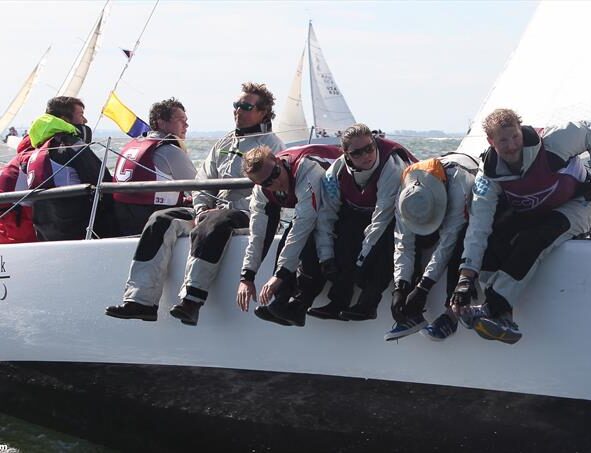Originally posted on Sail World by David Schmidt https://www.sail-world.com/news/209914/Ron-Weiss-on-the-Intercollegiate-Offshore-Regatta
While the American college-sailing experience is unlike anything else on the international stage, one obvious shortcoming of racing dinghies is that most post-college racing takes place in keelboats, which can make changing gears a big ask for some sailors. As a result, participation levels in the sport tend to plummet amongst post-grads. The Intercollegiate Offshore Regatta was created to help give graduating sailors some big-boat experience, and this year’s event (October 6-7) will again take place on the waters of Western Long Island Sound.
Some backstory. While the Intercollegiate Offshore Regatta was originally created and run by The Corinthians, the Storm Trysail Club took over the event in 2001, and, in 2004, they partnered with the Larchmont Yacht Club, in Larchmont, New York, in a move that gave the event a physical home. In April of 2008, the Storm Trysail Foundation was created, and it replaced the Storm Trysail Club as the event’s co-organizing authority in 2009.
Throughout this history, the Intercollegiate Offshore Regatta has relied on a model where boat owners-usually local-area club members-lend their boats to the event and serve as the "adults in the room" as college sailors learn the ropes of sailing and racing big and powerful boats.
Not surprisingly, the event has become popular amongst college sailors and has already helped expose thousands of dinghy sailors big-boat racing.
I checked in with Ron Weiss, Chairman of the Storm Trysail Communications and Sponsorship Committee, via email, to learn more about the 2018 Intercollegiate Offshore Regatta.

Am I correct that the Intercollegiate Offshore Regatta is the largest regatta on U.S. waters (if not internationally as well) for college-age sailors? Also, how many individual sailors and teams do you and the other event organizers expect to host?
I don’t know of any other college-only big-boat regattas that are even close to this size, at least in the U.S. The Student Yachting World Cup/EDHEC in France is larger, and I’m proud to say that we partner with them and often exchange winning crews at each other’s events.
We typically [host] 350-400 college sailors [each year, and] this year, there will be at least 44 colleges and universities that will be represented by 49 teams (some schools such as the service academies send two teams). There will also be one team from France and two from Canada.
Am I correct that the event still uses a Windward-Leeward format? If so, where does the name “offshore” fit into the mix?
While the racing itself is held inshore in Long Island Sound in a W/L format, the boats are all offshore-capable and equipped as such.
The concept behind the event is to [give] college sailors, many of whom have been primarily dinghy sailors, a chance to experience a different side of yacht racing.
As you know, many college sailors find that they grow out of the dinghy classes.
Both the Larchmont Yacht Club and The Storm Trysail Foundation’s missions are to encourage participation in offshore racing, so the Intercollegiate Offshore Regatta fulfills that mission by giving students a stepping-stone from small boats to big-boat racing. We see this event as a core part of that mission.

Typically speaking, what level of big-boat experience do most sailors have, coming into the event? What about when they leave?
This varies widely of course. Some colleges have fully formed big-boat teams already, but a majority of the schools bring members of their dinghy teams.
While individuals on these teams might have varying levels of offshore experience, as a rule, most of the teams do not have big-boat experience as a squad.
Many aspects of big-boat sailing-the level of boat preparation, team management, delegation, and on-board communications-are very new concepts to these teams. Some big-boat basics like winches or symmetrical spinnakers are unknown to a large number of the crews when they arrive.
When they end the regatta, however, they certainly have a better appreciation of the challenges and opportunities inherent in blue-water racing.
What kind of conditions does the regatta typically see? Early October can be windy on Long Island Sound, no?
Long Island Sound is famous for its variability. We’ve had regattas in 30+ knots (although we typically postpone racing in winds over 25 knots) and drifters, sometimes both in one regatta. That’s what makes sailing in this area so challenging.
Every boat has an owner’s rep and/or safety officer, and in the most rugged conditions they can make the decision whether or not the spinnaker can be safely handled based on the conditions and the experience of the crew.
Looking at the teams/schools currently entered, who do you see as the main players for the 2018 event? Any dark horses or lovable underdogs that we should know about?
Of course, each of us has our personal favorites such as our alma maters. The Navy’s Varsity Offshore Sailing Team is a perennial contender, and the service academies-USCG, Army, SUNY Maritime, USMMA/Kings Point, Mass Maritime and Maine Maritime-are always in the mix.
Boston University won last year, so they’d have to be a favorite, but it is interesting to note that with the turnover in the teams from graduations, any team can win in any year if they happen to have a few of the right crew, the right tactician or the right captain.
I personally had the pleasure of sailing with the EDHEC Business School team from France last year. The team consisted of five women and one man. Most of them only spoke a little English, and I don’t speak French, so there was a lot of “charades” and hand gestures going on. We all had a blast, and they certainly learned a lot, so [I] look forward to seeing how they do this year.

Is it hard to find owners willing to let college-aged sailors rip around the racecourse with their prized possessions? Or, do they see it as a form of sending the elevator back down to the ground floor?
As the event has grown over the years, it’s become a little harder to find enough boats, but we somehow manage to get enough boats that we don’t have to turn any teams away.
Some owners volunteer their boats for use with specific team that they have a personal connection to, either because they are alumni or have a child or relative in that school. We find, however, that once an owner has volunteered his or her boat and time the first year, they see how valuable the experience is for the teams, so getting them to commit the following year is much easier. We have many owners who have been doing it, literally, for decades. The owners have a blast and are welcome to attend both a Storm Trysail party and the crew dinner.
Anything else that you’d like to add, for the record?
We’re always looking for additional sponsors to help make the event even bigger and better. And we certainly encourage boat owners to bring younger people out racing with them in their own local events.

